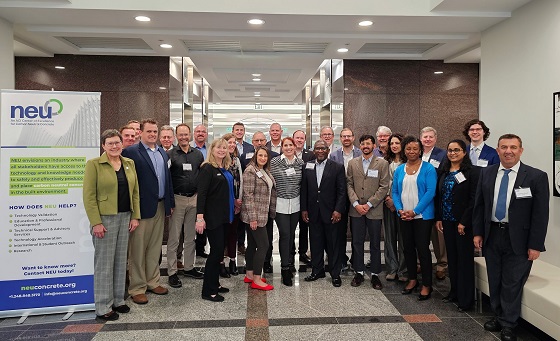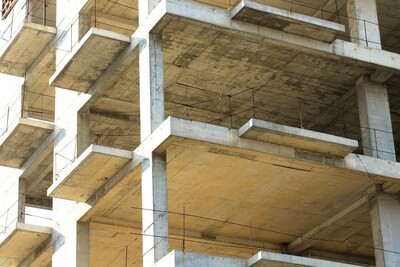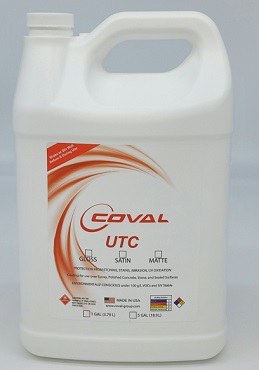Concrete is one of the most common substrates in the modern world. From the shiny, polished concrete floors of a new urban eatery to beautifully painted concrete grain silos, from bridge decks to wastewater containment facilities, concrete is everywhere. It is versatile, strong, and durable, yet porous and vulnerable if left unprotected.
Most people see concrete structures and walk on concrete sidewalks and floors every day without ever giving this unique substrate much thought. This familiarity with concrete can lead some to believe that there is nothing new to learn about this substrate; however, industry experts know that this is far from the truth!
While some aspects of the concrete industry are truly evergreen — proper preparation prior to coating application is essential, for example — there is much to learn as the industry evolves and improves.
Sustainability Solutions
Perhaps one of the most innovative and exciting aspects of the concrete industry is the continual pursuit of products, equipment, methods, and procedures that are sustainable and friendly to the environment. There are many facets of sustainability within the concrete industry, and industry organizations, associations, and individual companies all have a role to play in ensuring that sustainability goals and targets are established and achieved.
NEU: An ACI Center of Excellence for Carbon Neutral Concrete is one organization in the industry that has a mission to drive education, awareness, and adoption of carbon neutral concrete materials and technologies.
Recently, NEU members, allied industry association representatives, and representatives from the U.S. Environmental Protection Agency (EPA), Department of Energy (DOE), Federal Highway Administration (FHWA), and the National Institute of Standards and Technology (NIST) gathered at NEU’s first Summit on Accelerating Carbon Neutral Concrete Materials and Technologies.
Attendees discussed industry needs, current initiatives, and how all parties can work together to reach carbon neutrality throughout the cement-concrete value chain by 2050. Education on carbon emissions is considered a leading concern, which prompted the formation of a committee to tackle education goals. The objective of the committee is to work with NEU to determine the best paths to provide education to many different sectors, which includes college students, architects, owners, and contractors.
“We actually identified education early on as a priority of NEU,” said NEU’s Executive Director Dean Frank, P.E. “We realize that education and training is essential on many levels, from the finisher up on to the owner, as we are dealing with many new materials/technologies so there are many facets of education needed. There’s a confusing array of products on the market now, and NEU has a responsibility to provide an educated background on the options.”

Composition of New Concrete
The composition of new concrete is one of the unique ways that the industry is responding to the quest for sustainability and carbon footprint reduction. According to a recent press release, the DOE awarded C-Crete Technologies nearly $1 million to accelerate the company’s innovative work in cement-free concrete.
This monetary award will expand C-Crete’s use of locally available feed stocks and will eliminate the need for long-distance shipping, allowing the company to further decrease carbon-dioxide emissions associated with its already exceptionally eco-friendly concrete.
 In July 2023, C-Crete’s innovative cement-free concrete had its inaugural pour in Seattle, Wash., where it was used in the foundation and shear wall of a seismic retrofit for an historic brick building. The cement-free concrete is a sustainable alternative to portland cement that produces almost no CO2 in its manufacturing and actually absorbs CO2 from the air over time. Ordinary portland cement accounts for about 8% of the total CO2 emissions worldwide. Each ton of C-Crete’s cement-free binder used instead would eliminate around 1 ton of CO2 emissions.
In July 2023, C-Crete’s innovative cement-free concrete had its inaugural pour in Seattle, Wash., where it was used in the foundation and shear wall of a seismic retrofit for an historic brick building. The cement-free concrete is a sustainable alternative to portland cement that produces almost no CO2 in its manufacturing and actually absorbs CO2 from the air over time. Ordinary portland cement accounts for about 8% of the total CO2 emissions worldwide. Each ton of C-Crete’s cement-free binder used instead would eliminate around 1 ton of CO2 emissions.
“By enlarging our technology toolbox to utilize geographically versatile and abundant feed stocks, we can ensure that local materials can be converted to cementitious binders, eliminating the need for shipping such materials over long distances,” said Rouzbeh Savary, Ph.D., founder and president of C-Crete Technologies.
“In this way, architects, general contractors, local ready-mix companies, and end users can simply utilize local feed stocks and materials in their construction projects, accelerating the move toward net zero emissions in construction,” Savary added.
Effects of Polished Concrete
In the world of concrete coatings, the use of polished concrete is also having a positive effect on sustainability. “Polished concrete is a sustainable alternative to traditional floor coverings in industrial and commercial settings like warehouses and airports. Polished concrete requires little additional flooring materials, and once prepared, it is relatively low maintenance, making it ideal for larger spaces. Its reflective properties can also reduce overall energy usage,” said Jason McWilliams, director of sales, USA, at National Flooring Equipment.
McWilliams does caution contractors, though, to be aware of the end use of the floor and to communicate with the client about aesthetics, even if they are sold on the sustainability aspect of polished concrete.
“If a customer desires a polished concrete floor, it’s important to check the substrate’s condition before work commences,” he said. “In a renovated factory, for example, past oil, chemical, or organic material spills may have permanently stained the concrete. If contractors find these issues in advance, they can manage client expectations and discuss how imperfections could impact the final floor.”
“In circumstances where aesthetics [are] less important, like warehouses, the client might be indifferent to stains or other imperfections,” McWilliams said. Alternatively, in luxury spaces, such as a hotel lobby, contractors should work closely with clients to achieve the desired finish. This might involve [the application of] additional, thicker concrete coating on the substrate before polishing.”
Coatings for Highly Polished Surfaces
 One company that offers coatings for highly polished surfaces is Coval Technologies. Coval’s Ultimate Top Coat (UTC) has a nanotechnology composition that makes it an excellent choice for highly polished substrates such as polished concrete.
One company that offers coatings for highly polished surfaces is Coval Technologies. Coval’s Ultimate Top Coat (UTC) has a nanotechnology composition that makes it an excellent choice for highly polished substrates such as polished concrete.
Coval’s proprietary coating technology forms a covalent bond that integrates with the surface as opposed to a mechanical bond used in most coatings, which sits on the surface. UTC forms an extremely strong molecular bond to repel damage from chemicals, foods, oils, acids, and water to the underlying substrate, and it is abrasion resistant.
It is single component, ultraviolet (UV) stable, and applied with a sprayer as a thin-film layer to polished concrete, epoxy, and terrazzo tile.
Another company that offers a coating that increases the coefficient of friction (COF) of polished concrete and other substrates while maintaining the high shine aesthetic of these surfaces is STAIN-PROOF, part of the ICP Group. Its Clear Traction coating (top picture) is a topical sealer that is specially formulated with hard particles that rise to the top of the surface.
“Clear Traction adds texture to surfaces but in clear form, so there is a minimal appearance change,” said Scott Higginbotham, director of global sales at STAIN-PROOF. “Some products make patterns hazy or change their appearance, but this coating prevents stains, makes cleaning a cinch, improves grip, and eliminates worry about things like muting a floor’s color and shine.”
Moisture vapor barriers, or protection (MVP), may also need to be considered on concrete projects. According to Jeremy Redig of Advanced Resins, if there are any moisture concerns, with or without testing, he recommends using an MVP “out the gate” for assurance.
Editor’s note: This is an excerpt from the roundup article within the 2024 Concrete Covered Supplement. To read the complete story and supplement, please click here.